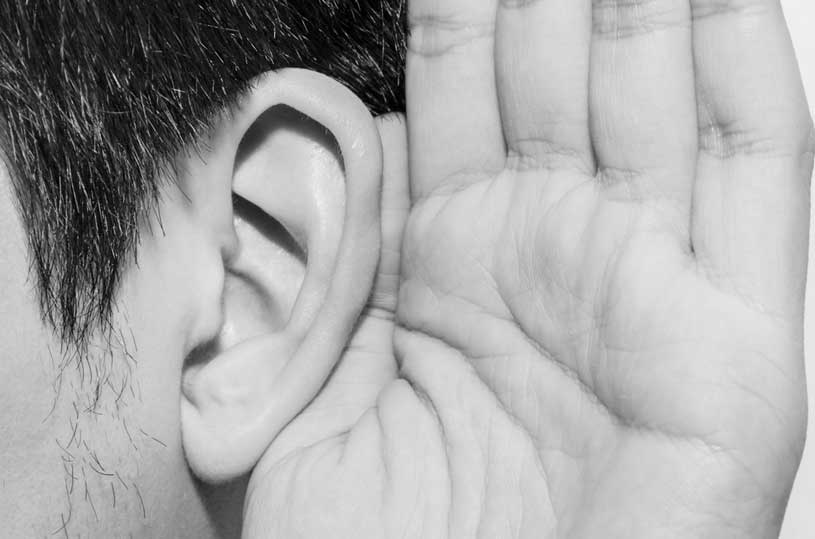
Why do we have two ears? Why isn’t one enough, placed in the center of the head, like the mouth, which is in the center of the face?
Come to think of it – why isn’t a simple hole sufficient enough to allow sound waves to enter the auditory canal? Why do we need that strangely shaped lump of flesh called an ear, rising like a wall to the rear, while completely open in the front?
Is it possible that this system developed by chance?
Just for a moment, let’s imagine what it is like to be a soldier in a guard post at night. The surrounding area is dark, nothing is moving and not a sound can be heard. Suddenly, there is a rustling noise on the right and the soldier immediately turns to face towards the source of the noise. How did the soldier know that the noise came from over there on the right? It’s simple. His right ear heard the noise slightly louder, and a fraction of a second before his left ear. This initial information was passed to the brain – the suspicious rustling noise was detected by the “receiver” on the right, so the brain immediately orders the visual detection systems to look in that direction and all the other body systems to go on high alert. The brain analyzed the situation at lightening speed, defined the problem and with the same rapidity, retrieved from the memory banks the military commander’s orders on how to behave in such situations. The brain then issued instructions to a range of systems, including the hand muscles and the speech system.
If the rustling noise is heard from the left, the left ear will hear it at higher volume and before the right ear. If the noise is heard directly in front, both ears will hear the noise simultaneously and at the same volume. What will happen if the noise comes from behind? How will we know how to recognize the source? This problem explains why the ear was designed in the shape we know it, open in the front and blocked at the back. This design creates an audio “shadow” behind us, which enables the brain to identify the exact position of the sound source relative to the “shadow.”
This explains much about the amazing design of the outer structure of our hearing system. We still have to explain the process through which we actually hear and how sound waves, penetrating the auditory canal, strike the ear drum. The mechanical energy created by this reverberation reaches the inner ear, where it is converted into the electro-chemical energy used by the nerves to transmit signals to the brain. This is a fascinating process.
We also have not explained the amazing ability to differentiate between different types of sounds or how we can identify two people holding a conversation and know who said what, even without seeing them talking.
While we are on the subject of conversations, have we ever really noticed how two entirely separate systems – the speech producing system and the auditory system – work with such consummate coordination? One system creates the sound waves while the other is constructed to receive those same waves.
Could a “chance” development have “created” and coordinated the precise design of these two complementary systems?
